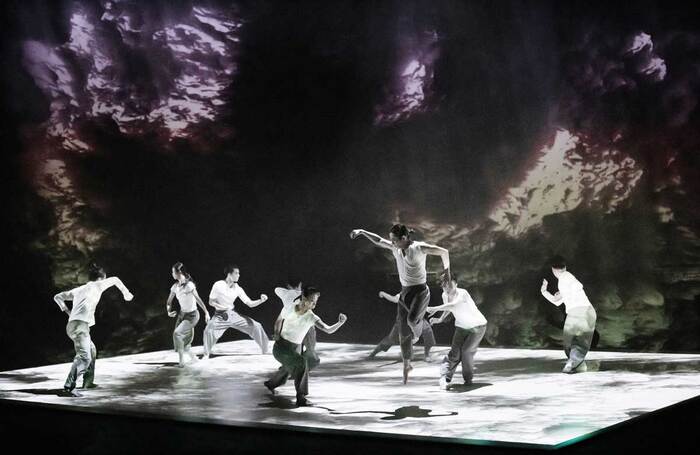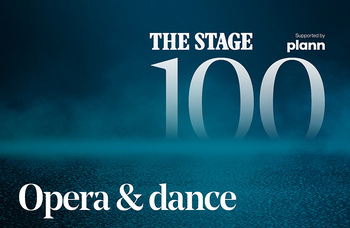From martial arts to 5G technology, an exciting new era awaits Hong Kong Dance Company
The multi-award winning company faced the challenges of Covid-19 head on, adopting new ways of presenting work. Now in its 40th year, it continues to find ways to innovate and develop and will stop at nothing to promote the art of Hong Kong dance
For 40 years, the Hong Kong Dance Company has been an integral part of the region’s culture, as well as a proponent of exquisite Chinese dance to the rest of the world. In its 40th anniversary year, HKDC has faced the challenges of the Covid-19 pandemic, but is now set for an exciting future, as executive director David Tsui explains: “It’s all about being fresh, new and energetic.”
But what does Chinese dance actually mean? Tsui explains: “It’s a mysterious term, because if you look back to the time of the dynasties, Chinese dance was the court dance that was performed in front of the king. But in wider society, there are lots of different types of folk and ethnic dance in different parts of China. So there are those two elements. But we are based in Hong Kong, where people from the West are passing through every day, so we bring in contemporary elements from around the world. It is dance based on the traditional cultures of China, but with Hong Kong characteristics.”
Artistic director Yang Yuntao – a dance pioneer, and the youngest ever artistic director of any of the nine major performing arts companies in Hong Kong – ensures that each season is carefully balanced to appeal to diverse audiences.
Productions might be inspired by Hong Kong’s pop culture, for example, films or comic books. Indeed one of HKDC’s major successes in recent years was L’Amour Immortel, based on the iconic film A Chinese Ghost Story. But other productions are created from scratch, and there are always shows in the season that are suitable for children and their parents in order to nurture the future generation of dancers and audiences.
The other major strand is the experimental work that emerges from HKDC’s black box space – the 8/F Platform. These new creations cross over with different art forms, engaging artists locally and from overseas, as well as exploring different technologies. It’s a seedbed for new talent, where young artists can try out their ideas and create the future of dance in Hong Kong.
The history of the company is split into two eras: before 2001, HKDC was an office of the Hong Kong Special Administrative Region. On April 1, 2001, the company left the government and formed its own board of directors. “We are partly funded by the government,” says Tsui, “and for the rest we have to fight for our lives.”
As one of the nine flagship performing arts companies in Hong Kong, HKDC regularly tours around the world, promoting outstanding Chinese dance to different countries.
It has established its Children’s and Youth Troupes, which have already made a name for themselves. The company also provides adult classes for people who might want to learn dancing after work.
With more than 200 productions to its name, many awards and extraordinary reviews, the reputation of HKDC is almost unparalleled. But when the pandemic began in January 2020, everything changed for the company.
The period from January 2020 to January 2021 saw venues in Hong Kong close and reopen a number of times. “I can proudly say that because even in the worst situation, we still kept our rehearsal going,” says Tsui. “So even though the dancers could not come back to the rehearsal room, we still used Zoom and other software to do their at-home classes and rehearsals. When we were first allowed to reopen in June 2020 we were ready to launch a large-scale dance musical immediately, because we never stopped preparing.”
HKDC also adapted to new ways of presenting work to audiences throughout the closures: performances were captured live on stage and then streamed online to virtual audiences. On its Facebook and YouTube channels, videos were posted to teach viewers about dance posture and motions – an essential tool for helping people stay physically well while they were working from home.
For the students involved in HKDC’s youth programmes, online initiatives were organised, including Zoom dance sessions and innovative use of 5G technology to stream classes without any lagging, which ensured the choreography could be kept in time. “It’s been busier than a normal year,” says Tsui.
Hong Kong Dance Company is always looking for ways to innovate and develop its practice. Recently, it has been doing this in two ways: first, engaging with the government’s Art Tech initiative. Tsui explains: “We will never give up live performance on stage, but we are excited to explore ways of incorporating technology in the future, such as installing 5G technology, in order to enhance our programme.”
The second approach to innovation started in 2018, when the company embarked upon a pioneering research project looking at the interaction of dance and the martial arts practices of Southern China. Through a series of training classes, research articles, workshops, exhibitions, seminars, interview videos and documentaries, a dozen professional dancers immersed themselves in several martial arts traditions, including Choy Lei Fat, Hung Kuen, White Crane and Baguazhang, led by master practitioners.
It’s about breaking down barriers: the dancers have explored the differences between dance and martial arts in terms of exercise and the way the body is used, allowing them to break through their limitations, and inspiring them to new ways of creating work. “We are not asking them to learn how to fight,” says Tsui, “but to learn from the martial arts about how their bodies and their movements change.”
Continues...
The project culminated in a work called Convergence, which premiered in October 2020. HKDC took the opportunity to incorporate technology into this research, too, by creating a motion-capture video that gave audiences a thrilling insight into the creative journey that led to Convergence.
The research also led to a new dance work entitled Shan Shui: An Ode to Nature, which incorporated Chinese dance and Chinese martial arts, and was the opening performance in the Company’s 40th anniversary season in May, attracting widespread critical acclaim.
Martial arts classes are now a regular part of the dancers’ training, and the company hopes that they will inform future performances and become its signature.
Going forward, Hong Kong Dance Company is already looking past its 40th anniversary to the next decade. Tsui and Yang Yuntao are determined to make HKDC a world-renowned, forward-looking company, known globally for its dance pieces full of Hong Kong character.
The company is also keen to nurture the next generation of dancers, as well as giving existing dancers more chances to create their own work. Another aim in the next few years is to further the company’s reputation around the world through overseas touring. “We want to become a touring company, as well as performing in Hong Kong,” says Tsui.
And there are ambitions for HKDC to become a recognised school for teaching Chinese dance to young people. “In mainland China,” Tsui explains, “children can attend specialist secondary schools, sometimes even primary schools, to become students of dance. In Hong Kong, specialised training in performing arts is only available in tertiary education institutions. Dance for young people is often just a hobby. So we want to provide classes and programmes that allow those children who love dance to reach a higher level of training before making a final decision about whether to go into professional dance training or not. Nobody else is doing this in Hong Kong.”
Despite the uncertainty of the past two years, as the world begins to open up two things are certain: first, that we will see a lot more of Hong Kong Dance Company in various parts of the world; second, that the company has a long and exciting future ahead.
Most Read
Across The Stage this weekYour subscription helps ensure our journalism can continue
Invest in The Stage today with a subscription starting at just £5.99






